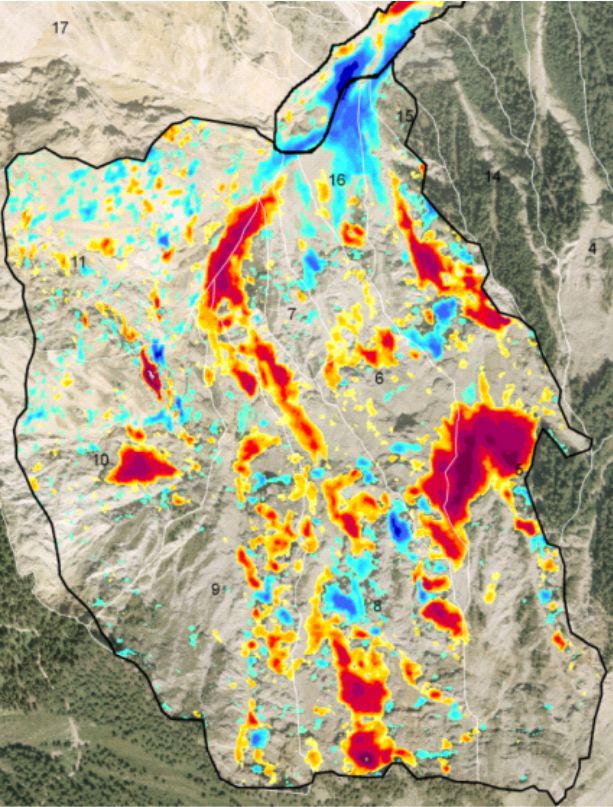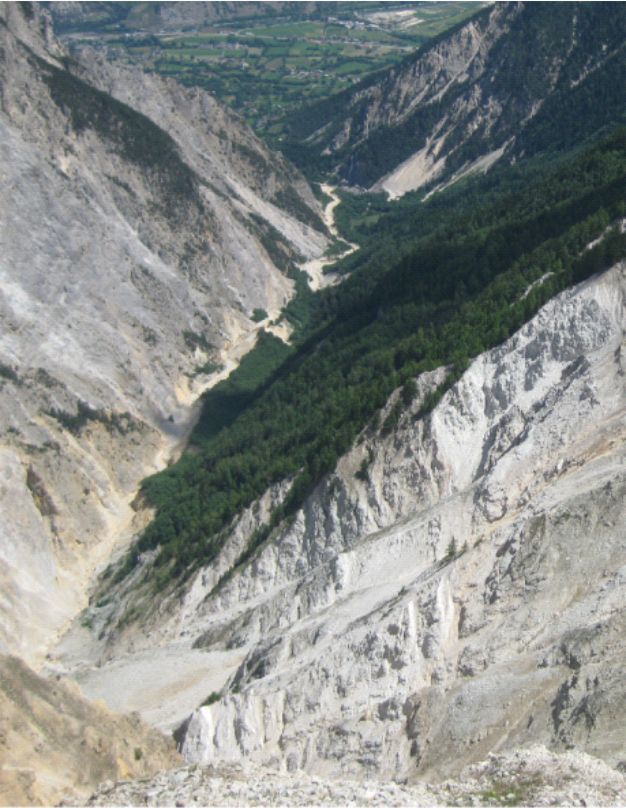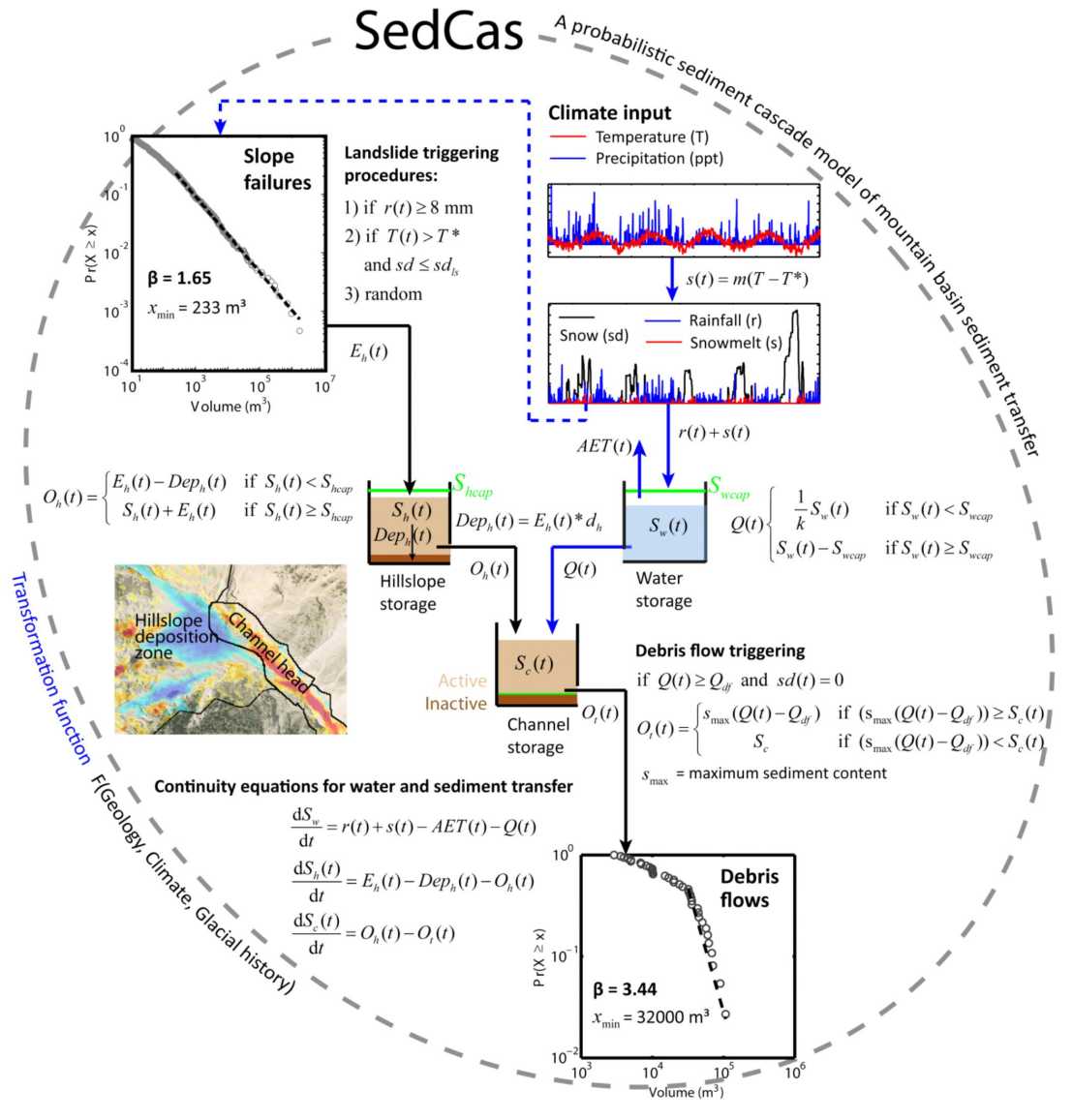SedyMONT - Analysis and modelling framework for sediment production and yield in mountain basins
Dates: 2009-2013
Funding: SNSF and ESF (external page TOPO-EUROPE Project)
PhD Student: Georgina Bennett
Principle Investigator: Prof. Peter Molnar
Mountain basins can been conceptualised as a sediment cascade, in which following hillslope erosion, sediment travels through multiple cycles of storage and remobilization, before exiting the basin in the form of debris flows and sediment-laden floods. In this geomorphic system there are many open research challenges, for example in measuring sediment supply (e.g. hillslope erosion, landslides), determining sediment residence times in different storage compartments, identifying the climatic triggering conditions for sediment transporting events, modelling of the hillslope-channel interactions, and quantifying sediment yield. A goal of this research project was to investigate the timescales of sediment dynamics in mountain basins and how they are impacted by climate.
In this research (1) we developed methods to quantify sediment supply from hillslopes by landsliding into a sediment cascade, (2) we estimated long-term hillslope-channel sediment erosion/deposition rates and their relation to climate, (3) we developed a new hydrological sediment cascade model SedCas, and (4) we investigated with it the effects of climate change and short-sampling on sediment yields and prediction uncertainty.
The study site is the Illgraben, an active debris-flow catchment in the Rhone Basin in the Swiss Alps.
Erosional power in the Swiss Alps

We used digital photogrammetry to produce a record of erosion of a rock-slope in the Illgraben basin spanning 42 years (1963-2005). We extracted an inventory of about 2500 slope failures resulting in a mean erosion rate of the main sediment-producing slope of about 0.4 m/yr. The landslide volumes followed a power law magnitude-frequency distribution with events produced by two separate slope failure processes: frequent small slides and slumps within the weathered layer of highly fractured rock, and less frequent and larger rockslides and rockfalls within the internal bedded and fractured surfaces. The latter may be infrequent but they make up 99% of the total sediment volume and are responsible for the high erosion rates in the basin. They also appear to limit the relief of the slopes in the Illgraben.
Bennett, G.L., Molnar, P., Eisenbeiss, H., McArdell, B.W. (2012) external page Erosional power in the Swiss Alps: characterization of slope failure in the Illgraben, Earth Surf. Process. Landforms, 37, 1627-1640, doi:10.1002/esp.3263.
Controls on sediment production and yield

We analyzed decadal records of hillslope and channel erosion-deposition, along with climatic and seismic variables to understand the controls on sediment production and transfer in the Illgraben. We found that an increase in hillslope erosion rates in the 1980s is most likely explained by an increase in thermal-induced weathering of the slope related to a rise in air temperature and drop in snow cover duration and depth. At the same time, the actual triggering of slope failures appears stochastic, with many potential triggering mechanisms on highly fractured and steep slopes. The rate of change in channel sediment storage is related to the frequency of intense summer rainstorms and runoff. The downslope-directed coupling between hillslopes and channels demonstrates a first order control of rock slope failure on basin sediment yield and landscape evolution in the Illgraben.
Bennet, G.L., Molnar, P., McArdell, B.W., Schlunegger, F., Burlando, P. (2013) external page Patterns and controls of sediment production, transfer and yield in the Illgraben, Geomorphology, 188, 68-82, doi:10.1016/j.geomorph.2012.11.029.
The sediment cascade model SedCas

SedCas is a sediment cascade model for the simulation of sediment dynamics in a mountain basin where sediment is produced by hillslope landslides and rockfall and exported out of the basin by debris flows and floods. The model conceptualizes the fluvial system as a spatially lumped cascade of connected reservoirs representing hillslope and channel storages. The model includes all relevant hydrological processes that lead to runoff formation in Alpine basins, such as precipitation, snow accumulation and melt, evapotranspiration, and soil water storage. Sediment transporting events are triggered by runoff in the channels. Sediment yield was shown to be driven both by the availability of sediment and antecedent wetness (system memory) as well as by the triggering potential of rainfall and runoff (climatic forcing). We showed that debris flows may be generated for a wide range of rainfall intensities because of variable basin wetness and snowmelt contribution to runoff.
Bennett, G.L., Molnar, P., McArdell, B.W., Burlando, P. (2014) external page A probabilistic sediment cascade model of sediment transfer in the Illgraben, Water Resour. Res., 50, doi:10.1002/2013WR013806.